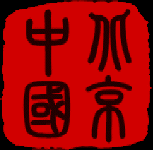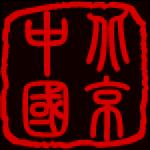 | The Forbidden CityPalace Museum |  |
 | The Forbidden CityPalace Museum |  |
Beijing, China
| Introduction to the Forbidden City Located at the exact center of the ancient city of Beijing, the palace was the home and center of power for 24 emperors during the mid to later Ming and Qing dynasties. In this guide, we open the doors of the Forbidden City and tour inside this beautiful palace with its 500 years of history. The guide includes over 600 photographs, 2 videos, and describes in detail all the main places of interest. It also presents a useful map.  A bird's eye view of the layout and location  Now officially renamed as the 'Palace Museum' ('GuGong' in Chinese, meaning simply 'Old Palace'), the extensive grounds cover over 700,000 square meters. There are around 800 buildings that have about 9,000 rooms in total. The Forbidden City is the world's largest palace complex. Indeed, it is listed by UNESCO as the world's largest collection of preserved ancient wood-based structures and was declared a World Heritage Site in 1987. Although the founations are stone and the walls made of brick, the buildings themselves are constructed almost entirely of wood. The skills for this are quite amazing, but there is the problem of fire, especially with candlelight and incense burning. That's why ne sees many large vats all around the palace, to store water for any outbreak of fire. The vats are raised on stone feet so that a fire could be lit underneath to stop the water freezing during harsh winter weather. The Forbidden City is encircled by a 50 meter wide moat then a 10 meter high purple wall; the perimeter is almost 3.5 kilometers long and the enclosed area about twice the size of Tian'AnMen Square. It lies at the center of YongLe's reconstructed Beijing, and symbolically between the Temple of Heaven (TianTan) to the south, and the Temple of Earth (DiTan) to the north along a central axis 8 kilometers in length. It was to be a reflection of heavenly order and a symbol of the emperor's heavenly mandate. At the heart of the walled city, and also a walled inner city, the palace was a city within a city. The Forbidden City is located directly to the north of Tian'AnMen Square and can be accessed from the square via Tian'AnMen Gate. This takes you through the grand and enveloping south gate of the palace (WuMen), the 'front door'. The Forbidden City remains a national symbol and an image of its entrance gate is part of the official seal of the People's Republic of China. The last emperor of China, PuYi, ascended the throne aged 3, but just four years earlier the republcan movement brought an end to imperial era in 1912. PuYi was forced to stay in the palace during the following twelve years but was evicted in 1924, and in 1925 ordinary folk entered the palace for the first time.  Today, the Palace Museum is open to the public and has become one of the world's most popular tourist attractions. Visitors can wander through the traditional palace architecture, view the art and artefacts in exhibitions and recreations, and learn of the many legends involving the imperial family and court. Electronic audio tours in many languages are available. Over 1 million treasures are stored here in total. The Chinese government has made a considerable investment in the the Forbidden City and it is now a fantastic place to meander and imagine the scenes that once played out here. Walls of terra-cotta and white marble, deep red pillars, roofs of golden glazed tiles, and gilded beams all unite to create a vista of outstanding beauty. Recently, the Forbidden City has been under a major renovation that has limited visitors to a few areas. However, it remains open and the great majority of places are accessible. This renovation will be completed 2020 to mark the 600th anniversary. The palace was opened in 1420, after 14 years of construction that involved 200,000 workers and artesans. In its heyday, around the end of the 18th century, nearly 10,000 people lived and worked within its confines.  The Palace Museum is China's most magnetic tourist destination and receives nearly 10 million visitors each year. YongLe was the third emperor of the Ming Dynasty (Han Chinese, 1368 - 1644). He restored BeiJing ('north capital') as the official capital, as it had previusly been set by Kublai Khan of the previous Yuan Dynasty (Mongolian, 1271 - 1368) when it was known as Dadu ('great capital'). YongLe put in place not just the Forbidden City but the basic layout and main features of the historical Beijing that we see today. He also renovated and restored use of the Grand Canal to bring goods from South China to the capital. He also supported the grand sea voyages of ZhengHe. YongLe died just four years after the palace was completed. The later Ming Dynasty is associated with the building of a new, stone and brick Great Wall, the one on whose ruins we walk today.
|
Share this page
|






Time to enter the Forbidden City ...
 Next : History of the Forbidden City
Next : History of the Forbidden City
China Travel and Culture Videos Home